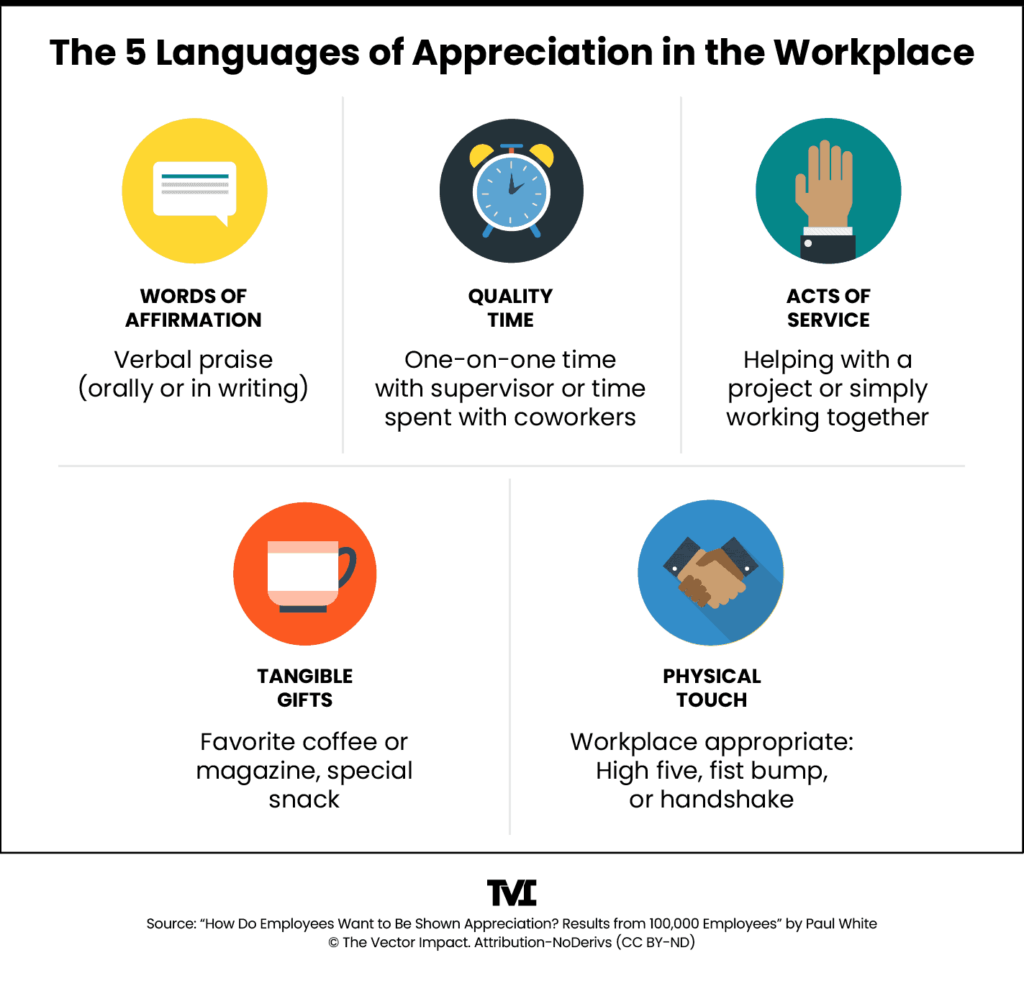Table of Contents
A crucial but overlooked leadership skill is knowing how to make employees feel valued in the workplace.
Let’s face it; it feels good to be recognized. You know the feeling—your partner thanks you for doing the dishes, your colleague compliments your solution to a difficult problem, a friend is grateful for your supportive texts. This acknowledgment makes us feel seen and valued.
Appreciation runs deeper than saying “thank you” here and there. From a professional standpoint, baking recognition into the everyday culture of an organization can have a real impact—both for individuals and the company as a whole.
Whether you’re a new manager or a seasoned leader, you’ll have happier and more engaged employees if you practice the art of appreciation.
So that begs the question, how do you master appreciation as a skill? What does it look like in the workplace? But before I jump too far ahead, you might be wondering…
Why does appreciation matter, anyway?
Most of us would agree that recognizing a person’s accomplishments and appreciating their contributions is the right thing to do. And it makes sense that this recognition would foster good relationships and make people feel good.
This goes beyond simply being polite. It turns out that being appreciated matters to a lot of us, according to a study on recognition in the workplace:

Not only does making employees feel valued matter to individuals, but it also delivers big returns when it comes to a company’s bottom line. Here’s how:
Productivity
Data from Quantum Workplace’s 2019 Best Places to Work shows that “when employees believe they will be recognized, they are 2.7x more likely to be highly engaged.” Showing appreciation improves employee productivity for the simple reason that they know their hard work is recognized. Increased productivity is inherently tied to performance. The better your employees perform, the better your company does.
Morale
Appreciating employees publicly can have a ripple effect across the workplace. When you recognize an employee before the entire company or group, you make them feel valued at work. This motivates others to work hard, as well as encourages a culture of appreciation, where employees are quick to call out each other’s wins.
Loyalty
Despite the modern workplace trend of switching jobs every two to three years, valued employees are more likely to stay with the company. According to HR professionals, recognition programs can positively affect retention (68%) and recruitment (56%).
Representation

Your employees are often the face of your company. They’re the ones interacting with customers daily and representing your brand to the world. If you want them to do a good job of that, model the type of appreciation you want them to extend to your customers.
5 ways to show appreciation in the workplace
Learning how to make your employees feel valued takes commitment and consistency. Here are five actionable steps to start expressing your appreciation at work.
1. Give praise for the small things
Not every praise has to be groundbreaking or massive for your company. While many companies reserve employee appreciation for major milestones, recognizing “small” wins is equally important (and fosters a culture of appreciation more quickly).
This strategy acknowledges the power of incremental change: All those little accomplishments add up and make a big difference to a company’s overall success.
That same domino effect can happen in the lives of your employees. Regular appreciation shows your people that you’re invested in them and what they do. It shows that you care. And you never know when a seemingly small gesture will have a big impact:
2. Be specific when expressing appreciation

To learn how to make employees feel valued at work, you have to be specific when expressing appreciation. When praise is specific, it shows your employees that you care and you’re paying attention. When you call out particular traits or accomplishments, your words mean more than broad appreciation (that could be directed at anyone). Learning to notice and express your gratitude is a true leadership skill.
Authors Gary Chapman and Paul White take specific feedback a step further—arguing that many employee recognition programs are too generic. In their book, “The Five Languages of Appreciation in the Workplace,” the authors make the case for authentic appreciation—which advocates for appreciation that is most meaningful to the recipient.

3. Send weekly appreciation emails
Email is a powerful medium to communicate with employees. And it’s much easier to address an entire team in an email than to do it verbally. Moreover, your employees will feel satisfied knowing you’ve noticed all of their hard work.
Of the five languages of appreciation, words of affirmation top the list for most people (and email is a great way to express those words):

4. Encourage career growth
Employees dream of working for a company that provides career opportunities and encourages growth. Too many companies prioritize the wrong things—often minimizing employee salaries—which typically backfires with high turnover (and ultimately fewer profits).

Salary is only one—very important!—concrete way to show appreciation. Supportive management (encouraging, advocating), valuable experience (the chance to work with a specific team or contribute to an important project), a path to move up within the company, and work-life balance are all examples of practical and meaningful ways to show appreciation for your employees’ hard work.
Related:
5. Turn appreciation into a social activity
Some companies incorporate appreciation through gamification. One example would be performance management software, like 15five, where you have an opportunity to tag and virtually “high-five” colleagues for a job well done.
Or host a virtual, weekly “wins” happy hour via Slack where employees can highlight each other’s accomplishments.
In-person, group recognition can also be a positive way to praise employees. Whether you have a weekly or monthly gathering, publicly showing appreciation can motivate the recognized employee, as well as their coworkers. This chance to be acknowledged can incentivize others to do better and promote a hard-working culture.
Ultimately, you get back what you give
Being a leader is a great responsibility. Your standards, habits, and priorities help create (and reinforce) the culture of your organization.
Leading with gratitude teaches others to pay attention, invest in their teammates, and share both accountability and success.
Happier, engaged employees are more motivated to do their best work—which leads to the best results for your organization. Win-win.
How will you make employees feel valued today? Let’s get to work.



